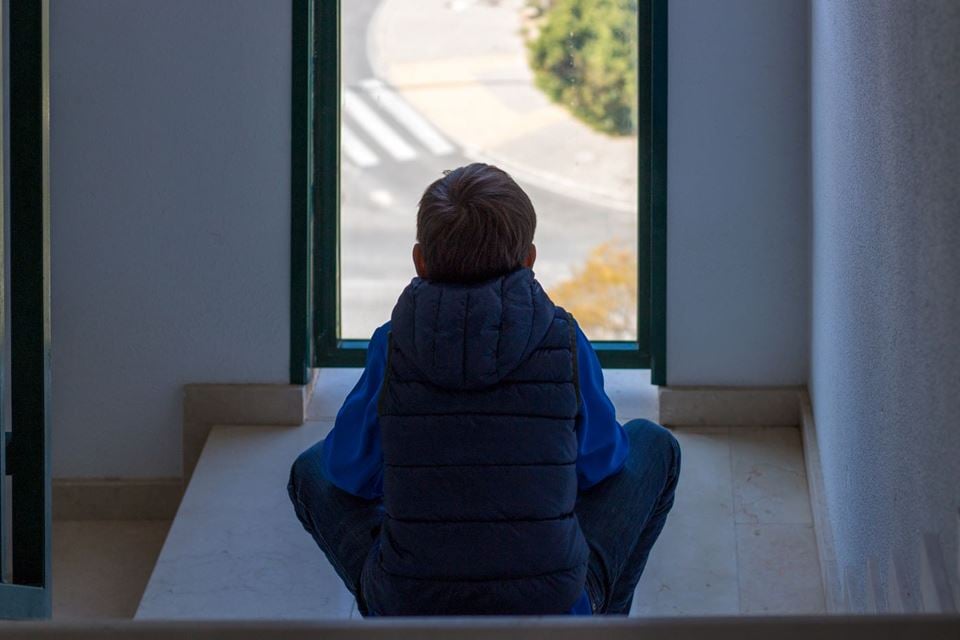New research is shedding light on the major challenges and barriers faced by children and young people in the welfare system who need to access mental health services.
“The dissatisfaction with the services felt by children, young people and their parents was clear for all to see”, says Marian Ådnanes, who is a health services researcher at SINTEF.

Senior Research Scientist Marian Ådnanes at SINTEF.
The aim of the research project ‘Helsehjelp til barn i barnevern’ (Meeting the health needs of children in the welfare system) has been to look in greater detail at whether children and young people in contact with the child welfare system are receiving the health care they need. The study investigated children who are living in child welfare institutions or foster homes, or who are receiving health and other relief measures in their own homes. Previous research has demonstrated that children in the welfare system exhibit higher frequencies of health disorders, not least mental health problems, than other children. The project was commissioned by Bufdir, the Norwegian Directorate for Children, Youth and Family Affairs.
- Click here to download the report ‘Helsehjelp til barn i barnevernet. Behov, barrierer og helsetjenestebruk (Meeting the health needs of children in the welfare system. Needs, barriers and the use of health services, in Norwegian)
“Our studies are looking into how such children, young people and their parents feel about their needs for, and access to, health care, as well as the barriers that exist in the system and the services. We compared the health care that children in the system are receiving with that provided to other children“, says Ådnanes, who has been heading the project.
Many challenges
One of the key conclusions of the report is that children and young people in the welfare system often exhibit a broad range of mental health problems and diagnoses. They are also more frequently in contact with both the specialist and municipal health services than their peers. In spite of this, many of them experience barriers in their attempts to access adequate mental health services.
The SINTEF researchers have interviewed children, parents and foster parents, and have studied individual cases. They also looked into the kinds of problems that arose and the agencies that intervened. They conducted a comprehensive registry study (a retrospective investigation in which findings are compiled in advance and sorted in a register, Editor’s note) which they used to investigate referrals and treatments in the health service system.
Project participants:
SINTEF has collaborated with NTNU Social Research, the Mid-Norway Regional Expert Centre for Children and Young People (RKBU) at the Centre for Mental Health, NTNU, and the Department of Health, Social and Welfare Studies at University of South-East Norway (USN).
The project was commissioned by Bufdir, the Norwegian Directorate for Children, Youth and Family Affairs.
“We found that children in the welfare system had more referrals to the BUP (child and adolescent psychiatric services) and somewhat shorter treatment waiting times compared with those outside the system”, says Ådnanes.
Long waiting times and poor flexibility
The researchers also found that there are barriers in the system linked to accessibility and generally long treatment waiting times. They also observed that significant problems were caused by a lack of flexibility in the treatments offered. An additional issue is linked to a lack of continuity of treatment. This may be due to the large number of agencies involved, poor coordination, changes in contact persons or therapists, combined with the fact that the children themselves often change location.
“The dissatisfaction with the BUP felt by children, young people and their parents was clear for all to see”, says Ådnanes. “In addition to the fact that parents in particular are critical of what they see as poor accessibility to the BUP, this criticism is to a great extent linked to their view that treatment is inadequately suited to the problems being experienced by their children”, she says.
The researchers also found that in order for children and young people in the system to experience satisfactory mental health care, they are particularly dependent on a relationship of trust with their therapists. This requires therapists to display a sincere interest, understanding, and to take their patients’ feelings seriously.
Lack of expertise on ‘both sides’
Case officers working in the childcare services reported the existence of barriers linked to the children’s own motivation for receiving help, as well as challenges caused by their parents’ financial status and lack of digital competence. Specialist professionals interviewed by the researchers both within and outside the system point to a lack of expertise within the child welfare services in both somatic and mental health, and to a shifting of responsibility between childcare and health service providers.
“We conclude our report by highlighting the need for better collaboration between the various agencies, a much greater focus on prevention and early intervention, and more flexible health service provision for children in the welfare system. Managers in the child welfare services are keen to emphasise the importance of viewing children in a life cycle perspective and ensuring for them adequate help and support throughout their upbringing.
Appeal from the researchers
According to the researchers, the SINTEF report offers a key insight into the challenges faced by children and young people in the welfare system as regards their access to health care. It clearly identifies areas where there is a need for improvement and goes on to propose a number of initiatives by which this improvement can be achieved.
“In the light of these findings, we hope that both the public authorities and service providers can get a grip on these problems so that children’s rights to adequate health care services can satisfactorily be met”, says Ådnanes.
Here are the items for improvement proposed by the SINTEF researchers in their report:
- Better adjustment to the target group, involving greater flexibility and more ambulant treatment provision from the BUP
- Measures that contribute to increased stability and better coordination
- Clear communication, to both the target group and other services, of what the municipal mental health services have to offer
- Place even greater emphasis on the value inherent in the patient-therapist relationship
- Measures to promote better knowledge about mental health and information about where help can be obtained (directed at children, young people and parents/foster parents)
- Promote participation in ways that enable children and young people to obtain support and feel safe
- Close the gap between the child welfare system and the BUP, including measures to strengthen the municipal mental health services
- Ensure that decisions regarding treatment rejection/termination are not based on fundamental challenges experienced by the child
- Create separate health teams dedicated to the child welfare institutions
- Delegate a greater level of responsibility to the mental health services (BUP) for health service provision to the target group
- Consolidate health-related expertise in the child welfare system
- Ensure that children who change address have access to a general practitioner (GP)
- Ensure that the new Norwegian initiative ‘Nasjonalt forløp for barnevern’ (National Roadmap for Child Welfare Services), which involves health assessments of children in the welfare system, contributes to early interventions




